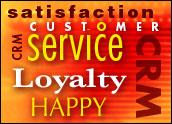
There’s no other series of business processes that are going through more of a transformation today and impacting customer relationships more than order management.
These series of processes have gone through multiple owners, first starting with IT, who adopted them as a quick way to achieve ERP (enterprise resource planning) system consolidation goals. Then they were passed on to the CFO and line-of-business managers, as many companies realized that their order management systems had been more of a liability than an asset and needed to deliver on the many commitments their companies have been making to customers.
Boiling the Ocean
What’s fascinating about the impact of distributed order management becoming the highest visibility process in many companies is what I call “boil-the-ocean” implementation strategies.
Not content to just do one series of production plants in one nation or continent, manufacturers increasingly are going for all ERP systems across all continents, looking to have a consistent, accurate and real-time response to any customer — anywhere, anytime.
What makes this so fascinating is that many of these companies have in the past taken measured, risk-averse and small changes to other processes, but not order management. I decided to look into what’s driving the boil the ocean strategy that pervades so many manufacturers today.
The Liabilities Forcing Change
Behind the boil-the-ocean urgency of making distributed order management systems work on a global basis, there were many symptoms of broader systemic disconnects manufacturers were experiencing. Here are a few of the most prevalent ones:
- Inability to take nonstandard product orders electronically. This was the case for one well-known PC manufacturer choosing to consolidate its distributed order management system and also develop an adapter to its contract manufacturers. This specific PC manufacturer ironically is well known for its built-to-order capability, yet it required extensive manual processing of its bill of materials planning for more complex orders and their fulfillment.
- Multiple pricing systems that vary by distribution channel, order capture, quoting and ERP systems. This was by far the greatest impetus for consolidating order management systems into a single one globally. The logic of manufacturers doing this was to discontinue all other pricing systems after the order management system consolidation.
What exacerbated this for one manufacturer were two costly factors: The first being the lag time in getting accurate pricing to its order capture systems in one area of the world; and a second, the lack of control over currency translations due to the fragmented nature of its systems.
- Coordinating with contract manufacturers’ production centers. This is the case especially for manufacturers in the cell phone industry, as the role of outsourcers is increasingly relied on for product development in addition to ongoing production operations. Distributed order management systems integrated to contract manufacturers in industries that have commoditized products are now required to deliver higher-than-average order velocities through these third party centers.
As Microsoft and Apple both look to accentuate and strengthen their cell phone businesses, the level of metrics that contract manufacturers will need to provide about just how efficient their order management integrations to these respective company’s fulfillment systems are.
- Missing shipment dates, lack of reliable metrics on order fulfillment, unclear if the perfect order is attainable. One mass storage vendor was flying blind when it came to the impact of its Hong Kong contract manufacturer’s influence on the performance of its distributed order management systems. Given the lack of clarity this manufacturer had regarding the impact of the often late and at times incorrectly configured storage devices and the resulting ill will with channel partners, the company had no choice but to extend its order management system to encompass the contract manufacturers’ ERP and production scheduling systems.
Lastly, many manufacturers relying on outsourced production and assembly have no idea if the perfect order metric can be attained or not. The need to encompass their contract manufacturing partners with a distributed order management system is critical.
Evaluating Your System
Defining how your own order management system stacks up begins with the following series of issues, and if you’re using contract manufacturing, to those critical partners as well:
- Heavy reliance on manual processes to translate build-to-order bills of material to production schedules. One would think that any company selling through a build-to-order strategy would first get the hand-off of orders to its bills of materials streamlined, automated and easily accomplished. One PC manufacturer has a person who bursts out the orders for the most complex configurations manually, and then transcribes the bill of materials.
This still happens today in many, many companies who want to project a state-of-the-art image of doing product customization, yet have not invested in automating the entire process. If your company does this, it’s a definite customer liability.
- Order fulfillment velocity and its impact on prompt shipment dates. For those manufacturers relying on contract manufacturing, this is a critical area to look at. In my experience, there is a definite experience effect that goes on in this area; contract manufacturers who are excelling at integration with their customers’ order management systems do deliver higher order fulfillment velocity over time. If you can measure this and even influence it, it’s a major asset.
- Percentage of orders shipped on time, percentage correct versus reworked orders and gross margin per customized product are all key metrics. Again, not to boil the ocean with metrics, these three will tell you a tremendous amount about your order management system being an asset or liability.
- Can provide available to promise (ATP) and capable to promise (CTP) through contract manufacturing via your order management system integration. This is approaching best practices, and while there are parallel tracking systems that contract manufacturers offer today, the ability to integrate this back to an e-commerce platform, for example, is very difficult to do but provides a transparent view for customers, who can’t tell the difference between your systems’ response and your contract manufacturers.
The Bottom Line
The many symptoms of an order management system that is not performing well gets mistaken as a pricing, fulfillment, e-commerce platform or more systematic problems when in fact the inbound orders need to be better managed and fulfilled.
Behind the shiny, new veneer of many company’s online and automated systems are many manual processes that are the crux of their order management systems.
Louis Columbus, a CRM Buyer columnist, is a former senior analyst with AMR Research. He has worked with enterprise clients on defining solutions to their channel management, order management and service lifecycle management strategies. He also teaches graduate-level international business and marketing courses at Webster-Loyola Marymount University and University of California, Irvine. He is the author of fifteen books on technology and two books on analyst relations. His book, Getting Results from your Analyst Relations Strategies, can be downloaded for free.














































